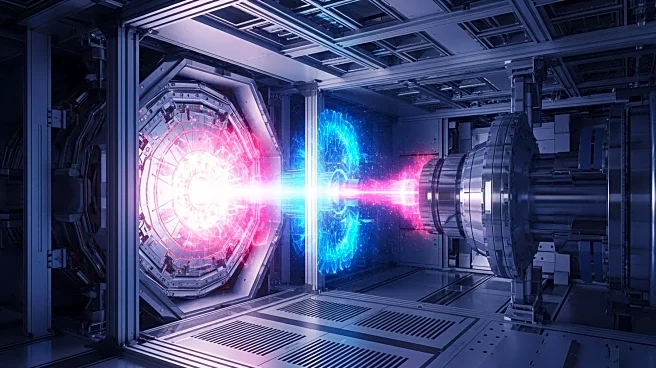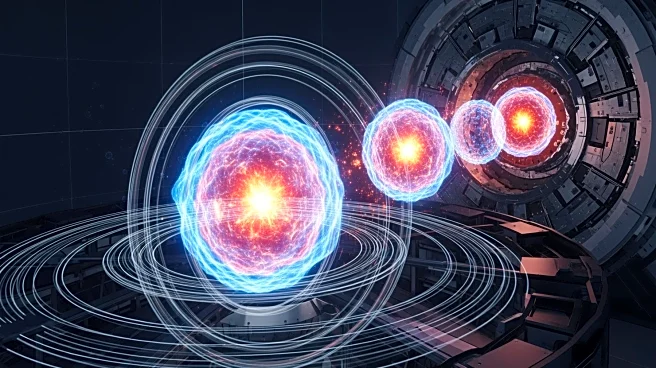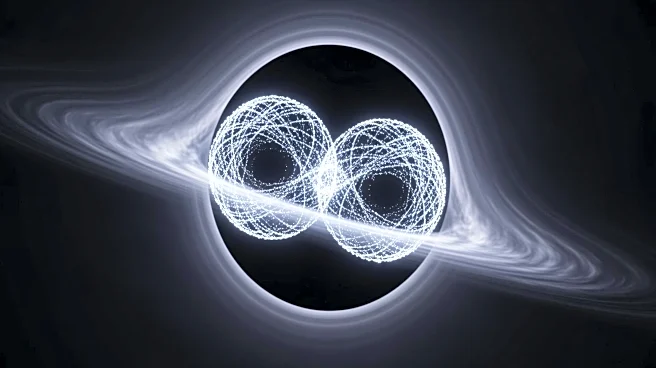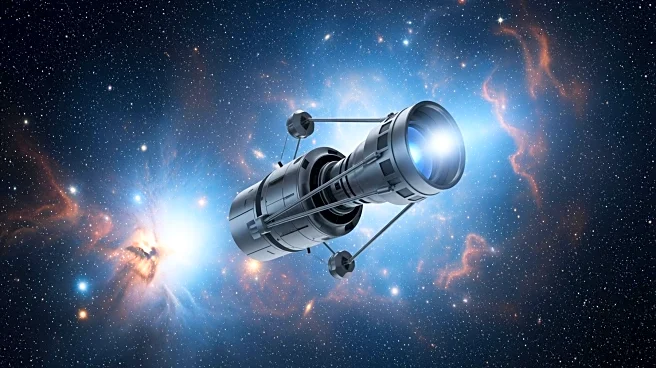What's Happening?
An international team of researchers, led by the University of Oxford, has successfully generated plasma 'fireballs' using the Super Proton Synchrotron accelerator at CERN in Geneva. This groundbreaking
experiment aims to explore how plasma jets from distant blazars maintain stability as they traverse space. The study, published in PNAS, seeks to address the mystery of the Universe's missing gamma rays and its vast, invisible magnetic fields. Blazars, powered by supermassive black holes, emit powerful jets of particles and radiation, releasing highly energetic gamma rays. These rays interact with background light from stars, producing electron-positron pairs that should collide with the cosmic microwave background, creating lower-energy gamma rays. However, this expected signal has not been observed by gamma-ray space telescopes like NASA's Fermi satellite. The research team tested theories regarding weak magnetic fields between galaxies and plasma instabilities affecting these pairs. Their findings suggest that plasma instabilities are insufficient to account for the missing gamma rays, supporting the theory of ancient magnetic fields in the intergalactic medium.
Why It's Important?
This research is significant as it provides insights into the fundamental nature of the Universe's magnetic fields, which have implications for understanding cosmic phenomena and the evolution of galaxies. The study bridges the gap between theoretical predictions and observational data, enhancing our comprehension of astrophysical objects. The presence of ancient magnetic fields could reshape our understanding of the early Universe and its uniformity, potentially involving physics beyond the Standard Model. The findings also underscore the importance of international collaboration in experimental physics, as demonstrated by the diverse team of scientists from various institutions. This research could pave the way for future explorations using advanced observatories like the Cherenkov Telescope Array Observatory, which may offer more precise data to test these theories.
What's Next?
Future research will focus on exploring the origins of these ancient magnetic fields and their implications for the early Universe. The researchers suggest that further investigations may involve physics beyond the Standard Model. Upcoming observatories, such as the Cherenkov Telescope Array Observatory, are expected to provide sharper data to delve deeper into these theories. The study highlights the potential for laboratory astrophysics to test high-energy Universe theories, offering a novel dimension to frontier research at CERN. The results may stimulate interest in the plasma astrophysics community, encouraging further exploration of fundamental cosmic questions in terrestrial high-energy physics laboratories.
Beyond the Headlines
The study raises ethical and scientific questions about the role of laboratory experiments in understanding cosmic phenomena. It challenges existing theories about the early Universe's uniformity and the formation of magnetic fields, suggesting that new physics may be required to explain these observations. The collaboration between international research facilities exemplifies the importance of global scientific partnerships in advancing knowledge and tackling complex astrophysical mysteries. This research could lead to long-term shifts in our understanding of cosmic magnetism and its impact on galaxy formation and evolution.











